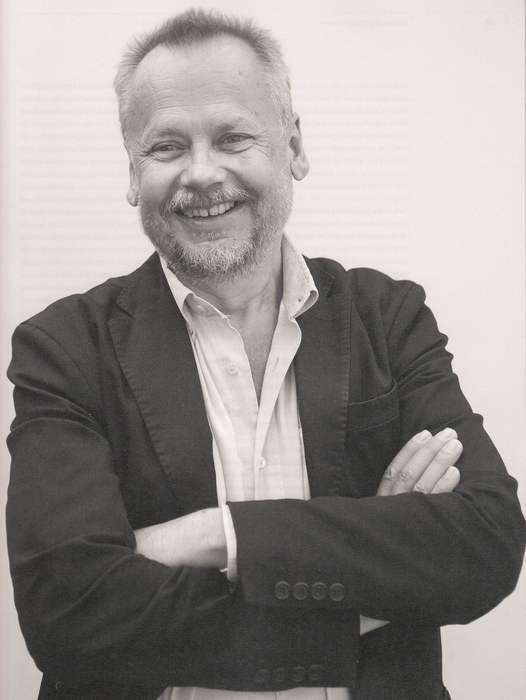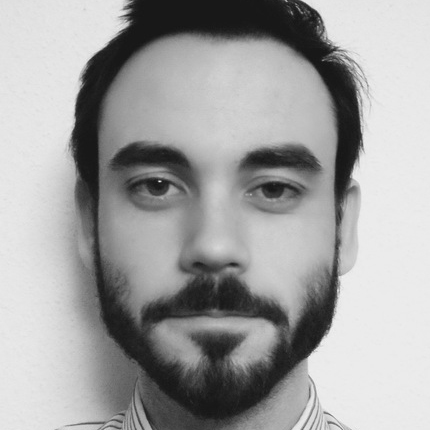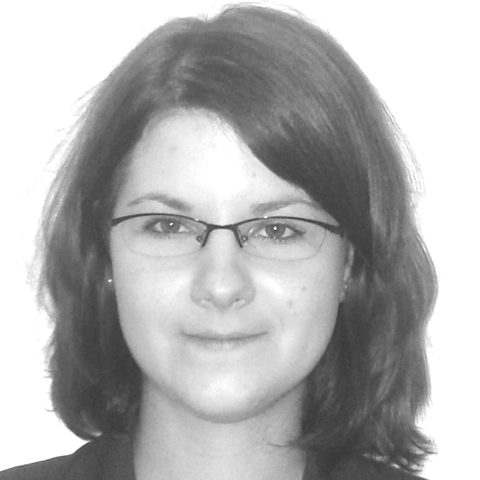A Way to Follow: Interview with Piotr Piotrowski

It is with great sadness and a sense of enormous loss that we learnt of the recent death of Piotr Piotrowski. Piotrowski was a professor in the Art History Department of Adam Mickiewicz University, Pozna?, and a research fellow at the Graduate School for East and South-East European Studies at the universities of Munich and Regensburg. He is the author of several books, including: Meanings of Modernism (2009, 2011), In the Shadow of Yalta (2009), Art after Politics (2007), Critical Museum (2011), and Art and Democracy in Post-Communist Europe (2012). Between 2009 and 2010, he was the director of the National Museum in Warsaw, and in 2010 he was the recipient of the Igor Zabel Award for Culture and Theory. Piotrowski was on the Advisory Board of ARTMargins Print Journal and was an early supporter of this publication. The following interview was occassioned by the recent international conference Piotrowski organized on global art history, East European Art Seen from Global Perspectives: Past and Present, that took place in Lublin, Poland, October 24-27, 2014.(For further information about the program of the conference, the lectures and the speakers, visit: http://www.konferencja.labirynt.com/en.)
– The Editors
Richard Kosinsky: When defining a specific geographic location do you think that this carries the danger of fragmentation and/or generalization?
Piotr Piotrowski: Usually, conferences present a specific view of a certain research area; this leads to fragmentation because they cannot deal with everything. It is really hard to write or to discuss this sort of synthesis. The only book that I know that uses this sort of a synthesis, dealing somehow with global art history, is Real Spaces: World Art History and the Rise of Western Modernism by David Summers.(David Summers, Real Spaces: World Art History and the Rise of Western Modernism (London and New York: Phaidon, 2003).) This is an over 700-page book that he worked on for twenty years. No, I am aware that the Lublin conference and the lectures presented by the speakers are also somehow fragments of a wider, broader spectrum.(The conference is East European Art Seen from Global Perspectives: Past and Present, October 24-27, 2014, Lublin, Poland.) But I would not say that this is a problem: we have to do this, and the more studies are being carried out, the better.
RK: How does describing the narrative of peripheries change our image of the center? Would this not give way to the possibility of creating a competing master narrative?
PP: Generally speaking, and this is a generalization, we only have peripheries. We do not have centers. The centers are interesting only if we take them as peripheries. Of course, if we talk about a master narrative we have to ask what that means and for whom it is the master narrative. If we use the tools of art history that deal with the art market, or with tourism, then we have, of course, something of a master narrative created in the so-called centers. But in terms of academic writing and studies, I am not sure that this is effective anymore. So, I would say, first of all, that centers are interesting in terms of their periphery; secondly, that the master narrative, that mainstream art histories are present in layman circulation, but not in real scholarship. Thirdly, as presented in some lectures at this conference, the notion of the periphery does not work properly, it does not show the real problem right now. This is why I prefer the notion of margins, instead of peripheries, which is not the same. However, I would argue that the dichotomy of the center and the margins is not very effective at the moment. “Provincializing centers” is what I prefer doing. Everything is a periphery, everything is rooted in a particular context.
Jan Elantkowski: Any marginal narrative is set against that of a cultural center; therefore a narrative is a question of perspective – the observer’s location. But is the location always defined by the center?
PP: Yes. Because in mainstream art history, in which I was trained in Poland, we were told that the center, especially French art, was universal. However, art that is located in a particular historical and cultural context would lose its universality and become deterritorialized. Therefore, I would say that the way to provincialize the center is to locate it.
RK: How do narratives relate to each other, and is communication between them only possible through the center?
PP: No, I do not think so. When I studied art history we were told that all cultural narratives communicated through the centers: for example, Cuban and Brazilian art communicated by way of Paris. However, today we are facing a different model, and communicating by way of the center is not necessary anymore. Because of technology, it is very easy to communicate through the Internet. So the challenge we are facing now is how to find the relationships—not necessarily the influences – but the structural relationships between the previous so-called peripheries. Take the examples of Argentina, India, and Africa: they communicate without mediation from any centers. The center is not necessary for mediating these contacts and relationships, especially in terms of comparative art history, which tries to compare different structures and meanings of art. Nervertheless, when speaking about history we can not ignore that at the end of the nineteenth century and the beginning of the twentieth, Paris was the center of the world. But our idea is not to see those cultures in terms of dependency, but to ask what kind of role Paris played in these peripheries. For example, in Calcutta at the beginning of the 1920s, there was a Bauhaus exhibition.(The fourteenth Annual Indian Society of Oriental Art Exhibition and the Bauhaus, Calcutta, India, December, 1922.) There was generally a strong impact of European modern art on India. The question now is not one of influence, but how European modern art has been used in order to create Indian art. And this sort of art, paradoxically, has been used to decolonize India, because India was colonized by England and, in terms of art, it was mostly colonized by academics. Modern art helped Indians to recover and decolonize their own culture by, among other strategies, combining local, vernacular traditions with modern forms. Again, the question remains: What kind of function did, Paris, as a former center, play in places like Calcutta?
Barbara Dudás: A new terminology is crucial for discussing the new paradigm of global art history. The best method for achieving this, as you already mentioned,is through comparative studies. Do you think that a vernacular language created in this way should focus on local narratives, or should it aim to be transregional or even transnational?
PP: This is the slogan: Think global, act local! So what, frankly speaking, is local? What is global? It’s a relationship. I think the key notion here is cosmopolitanism, which is different from being international. Cosmopolitanism has an ethical attitude, an ethical approach. People are living in a polis, but at the same time they think in terms of the cosmos, the global. The international relationship you are addressing is executed and developed very often in the East. Cities, the polis, are cosmopolitan, and contemporary culture is mostly metropolitan. It developed in the big cities, and those big cities were cosmopolitan and, at the same time, global. From a contemporary point of view, maybe we are losing something of the definition of the regional and getting something different in return, the metropolitan. For example, instead of talking about US American culture, we are talking about culture in New York and Los Angeles; instead of talking about British culture, we think of the culture of London. Hungary is a smaller country, but I am sure there are differences between Hungary, treated as a whole, and Budapest. I would say that the slogan Think global, act local! fits these sort of questions perfectly.
BD: How would you define the relationship between global art history and the globalization of art?
PP: The two notions are completely different. The globalization of art has two meanings, one of them is the market. Artists who enter the market see that the market is globalizing. The other possible meaning of globalization can be explained with reference to how, for example, Jonas Staar, a Dutch artist, broached the global challenge by organizing, what he called the New World Summit, an alternative parlimentary platform, during the 7th Berlin Biennale in 2012.(“The New World Summit is an artistic and political organization dedicated to providing ‘alternative parliaments’ to host organizations that currently find themselves excluded from democracy.” See http://newworldsummit.eu/) So we have commercial artists who take the global exclusively as a market opportunity. Then we have artists, like Star, who think in a global way, but who understand the global as the arena or platform for what I might call the global politea. Global constitution for global democracy. This is maybe the biggest challenge right now, because globalization affects the framework of the economy; however, politics, human rights, labor are neglected, and issues similar to these are still the framework within which nation-states exist. These artists are working for the global politea, they work in the same way as people from the alter-globalist movement. The alter-globalist movement has changed the attitude from anti-globalization to a critical, alternative globalist approach.
These are very important differences. Globalization implies a mostly economical impact, and it refers to transnational capital. But what I understand as global art history is a kind of a retrospective way of examining the history of art in terms of the global. This art history deals not necessarily with globalization exclusively after 1989, but treats art history as a global discourse, applied retrospectively to earlier periods of art. My own approach to global art histories is comparative. We can compare what was going on in India in the 1920s with developments happening in Eastern Europe at the same time. It is not necessary to find some direct relationship between those two, but rather to compare how modern forms or modernism work to recover some local identity.
RK: During your time as the director of the National Museum in Warsaw you tried to implement the idea of a critical museum. Do you think that the critical approach of comparative studies can be a model for an institution as well?
PP: My idea was very simple. I was teaching museum studies before I got that job, therefore I was quite familiar with so-called critical museum studies. Secondly, there is an artistic tradition of producing critical art,or art that tries to deconstruct reality. There was nothing strange in this way of thinking for a museum of modern art. There were other attempts to apply this way of critical thinking, for example, at the New Museum in New York which was founded in the late 1970s.(To read the founding history of the New Museum, visit: http://www.newmuseum.org/history) My idea was to use this knowledge and tradition in the National Museum in Warsaw in terms of historical art.
The museum in Warsaw is called the National Museum, but it is not the same as the National Museum in Budapest, which is a historical museum. In Poland, the National Museum is like a national gallery, so I wanted to apply these traditions and experiences to the context of a national gallery or a museum of fine arts. I was convinced that such museums can or could work on the level of critical culture and foster a critical way of thinking, to finally improve democracy! There was no particular model, historical or museumwise. These institutions did not deal with a critical approach. Rather, the idea came from contemporary art, including contemporary art museums.
RK: Do you think that a critical attitude is essential for a society if it wants to create its own narrative and, through this, its identity? Is the democracy of art a radical form of social democracy?
PP: First of all, I am quite convinced that a critical way of thinking is our obligation. If you live in a particular place, you have to think in a critical way in order to improve that place, and this is also how it is with democracy. Being critical is an obligation for every intellectual, not just for scholars, art historians, and artists. No, we all have to think critically. Democracy is not a gift, it is not a given, we have to fight for this every day because there are always enemies. Critical ways of thinking can be used to disarm those who are against democracy. It is the condition in which intellectuals exist.
JE: What are your future academic plans?
PP: I am working on a project I am calling “Globalizing Eastern Europe.” In my short text on horizontal art history, I proposed a model for a comparative art history that works without centers. I want to develop this horizontal art history in a global perspective.(Piotr Piotrowski, Towards a Horizontal History of Modern Art, in: http://www.erstestiftung.org/patterns-travelling/content/imgs_h/Reader.pdf.) By this, I mean that post-war East European art practices can be compared with similar artistic practices in other parts of the world. Let me give you an example. A crucial moment in post-war Eastern and Western European art history were the 1947-48 debates about realism. In Hungary, there was the European School which started to face some trouble because of political reasons.(The European School was a civil movement founded by prominent artists and theorethicians of the time. (Imre pán, Árpád Mezei, Pál Gegesi Kiss, Ern? Kállai, Lajos Kassák, etc.) in 1945. Their goal was to create a group of progressive Hungarian artists to present the modern European art to the Hungarian public. The members of the European School advocated the freedom of art, which led them to disconnect their art from reality and tried to process the horrors of World War II. The communistregime judged these endeavors harmful to the communist society and made it impossible for the European School to continue their activities in and had to dissolve in 1948.) Poland and Czechoslovakia were seized by the Communists. In each of these countries, artists and theoreticians wanted to implement a very particular type of realism called Socialist Realism. At the same time, there were people defending modernism or abstract art. The struggle between these two factions provided the background for artistic production in both Eastern and Western Europe at the time.
My idea is to compare the situation in Europe with similar debates between proponents of modernism and Socialist Realism in the Third World, for example in India, where these debates took place after the country regained its independence in 1947. When the Bombay Progressive Artists’ Group was founded in the house of Indian-Soviet friendship, there were artists who created art by struggling with social issues. Marxism was very powerful in India during the 1930s and 1940s. Remember that realists used the rhetoric of peace, while modernists used the rhetoric of freedom. So there was peace and freedom; realist painting and abstract art. India was especially important because it wanted to become a modern country through modernism. Generally speaking, for me, globalizing Eastern Europe means to compare the debates in Eastern European art with similar debates around the world.
Lublin, Poland, October 26, 2014.
This conversation is the first in a series with new members of the ARTMargins print journal editorial board. The next scheduled interview will be with Geeta Kapur (New Delhi).
Read more interviews and articles featuring Piotr Piotrowski below:
Piotr Piotrowski, “In the Shadow of Yalta” (Book Review)
Piotr Piotrowski About His Resignation from the Polish National Museum
Provincializing the West: Interview with Piotr Piotrowski

 Richard Kosinsky is currently a PhD student at the Eötvös Loránd University, Budapest, Hungary. He is writing his thesis with a research fellowship on the comparative studies of abstract art with a special regard to the Hungarian scene. His research area includes theory of art, modernism, visual studies and the question of cultural identity in contemporary art, with a focus on the Central and Eastern European region.
Richard Kosinsky is currently a PhD student at the Eötvös Loránd University, Budapest, Hungary. He is writing his thesis with a research fellowship on the comparative studies of abstract art with a special regard to the Hungarian scene. His research area includes theory of art, modernism, visual studies and the question of cultural identity in contemporary art, with a focus on the Central and Eastern European region. Jan Elantkowski received his M.A. in art history from Adam Mickiewicz University in Pozna? and currently is a PhD student at the Eötvös Loránd University, Budapest, Hungary. He is writing his doctoral thesis on Holocaust and remembrance in Polish and Hungarian art, besides his focus of interest is the contemporary art from Central and Eastern Europe.
Jan Elantkowski received his M.A. in art history from Adam Mickiewicz University in Pozna? and currently is a PhD student at the Eötvös Loránd University, Budapest, Hungary. He is writing his doctoral thesis on Holocaust and remembrance in Polish and Hungarian art, besides his focus of interest is the contemporary art from Central and Eastern Europe. Barbara Dudás is a journalist and PhD student in art theory at Academy of Fine Arts Vienna, Austria. She is currently an exchange student at the Centre for Fine Art Research at Birmingham City University, United Kingdom. Her research area is globalization and global art history with a special regard to contemporary Hungarian and Eastern European art and art theory.
Barbara Dudás is a journalist and PhD student in art theory at Academy of Fine Arts Vienna, Austria. She is currently an exchange student at the Centre for Fine Art Research at Birmingham City University, United Kingdom. Her research area is globalization and global art history with a special regard to contemporary Hungarian and Eastern European art and art theory.


